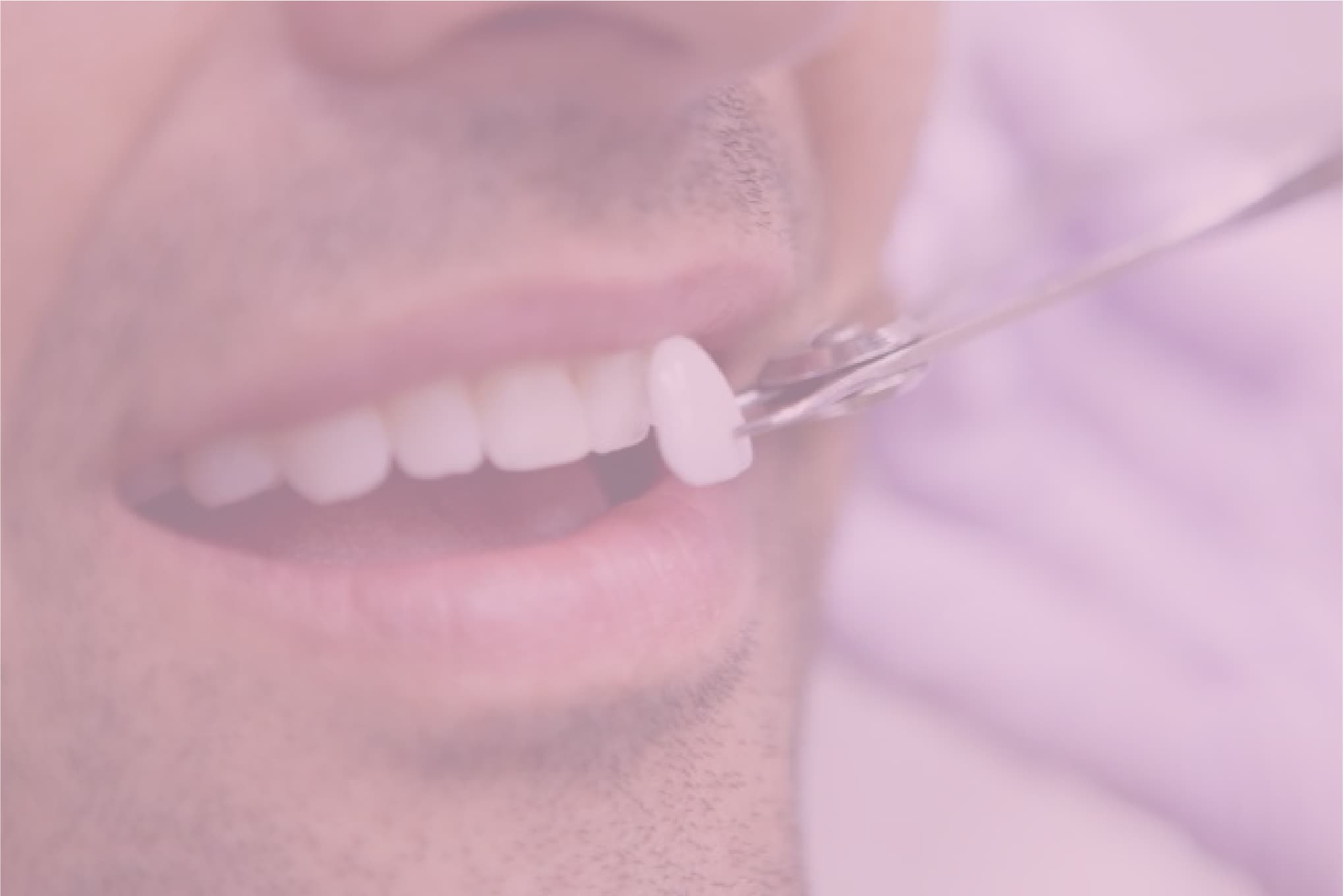Understanding the Dental Veneer Procedure: A Step-by-Step Guide
Are you considering dental veneers but unsure about the procedure? Don’t worry, this step-by-step guide will help you understand the entire process.
From the initial consultation to the final placement and bonding, you’ll learn what to expect at each stage. Despite any concerns you may have, this guide will provide a clear and comprehensive overview of the dental veneer procedure.
You’ll discover the importance of an initial consultation, the dental examination and preparation, the creation of custom veneers, and the final placement and bonding process. Additionally, we’ll cover the follow-up and aftercare to ensure you have all the information you need for a successful veneer experience.
Get ready to enhance your smile with confidence!
Key Takeaways
– The dental veneer procedure involves an initial consultation and examination to discuss goals, evaluate oral health, and determine the best approach for treatment.
– Impressions are taken to create custom-made veneers, and temporary veneers are placed to protect teeth and provide temporary improvement.
– Different veneer materials are available, with porcelain veneers known for their natural appearance and stain resistance.
– During the veneer placement and bonding process, each veneer is carefully placed and bonded to ensure proper fit and alignment, and a follow-up appointment is scheduled to ensure proper alignment and address any concerns or issues with the veneers.
Initial Consultation
During your initial consultation for dental veneers, the dentist will discuss your goals and evaluate your oral health to determine if you’re a suitable candidate for the procedure. This consultation is a crucial step in the process as it allows the dentist to understand your expectations and ensure that your oral health is in good condition before proceeding with the veneers.
During this consultation, the dentist will carefully listen to your concerns and desires regarding your smile. They’ll ask you questions about what you hope to achieve through the veneer treatment. This is important because it helps the dentist tailor the treatment plan to meet your specific needs and desires.
Additionally, the dentist will evaluate your oral health to ensure that you’re a suitable candidate for dental veneers. They’ll examine the condition of your teeth and gums, looking for any signs of decay, gum disease, or other issues that may need to be addressed before veneer placement. This thorough evaluation is necessary to ensure the success and longevity of the veneers.
Dental Examination and Preparation
Now it’s time to examine your oral health and prepare your natural teeth for the dental veneer procedure.
Your dentist will carefully assess the condition of your teeth, checking for any underlying issues that need to be addressed before placing the veneers.
They’ll also discuss the desired outcome with you and determine the best approach to achieve the results you want.
Prepping Natural Teeth
To prepare your natural teeth for dental veneers, a thorough dental examination and proper tooth preparation are necessary. Here’s what you can expect during this important step:
1. Dental Examination: Your dentist will carefully inspect your teeth and gums to assess their overall health and identify any underlying issues that may need to be addressed before proceeding with veneers.
2. Tooth Preparation: In order to create space for the veneers, a thin layer of enamel will be removed from the front surface of your teeth. This process is painless and typically requires local anesthesia.
3. Impressions: After the teeth are prepared, impressions will be taken to create custom-made veneers that fit perfectly over your natural teeth.
4. Temporary Veneers: While your permanent veneers are being fabricated in a dental laboratory, temporary veneers will be placed to protect your teeth and provide you with a temporary aesthetic improvement.
Examining Oral Health
Your dentist will conduct a comprehensive dental examination and prepare your teeth to ensure optimal oral health before proceeding with dental veneers.
During the examination, your dentist will thoroughly assess the condition of your teeth and gums. This may involve taking X-rays to identify any underlying issues that may affect the success of the veneer treatment. Your dentist will also check for signs of decay, gum disease, or other oral health problems that need to be addressed before moving forward. If any issues are found, your dentist will take the necessary steps to treat them, such as filling cavities or treating gum disease.
Additionally, your dentist will prepare your teeth by reshaping them slightly to ensure a proper fit for the veneers. This may involve removing a small amount of enamel from the surface of the teeth.
Impressions and Temporary Veneers
After your teeth have been prepared, the dentist will take impressions and create temporary veneers. This step is crucial in ensuring that the final veneers fit perfectly and look natural. Here’s what you can expect during this part of the dental veneer procedure:
1. Impressions: The dentist will use a special putty-like material to take impressions of your prepared teeth. These impressions will serve as a mold for creating the final veneers. It’s important to remain still and bite down firmly while the impressions are being taken.
2. Temporary Veneers: While the permanent veneers are being fabricated in a dental lab, the dentist will create temporary veneers to protect your prepared teeth. These temporary veneers are usually made from a resin material and are designed to resemble the final veneers as closely as possible.
3. Fit and Adjustments: Once the temporary veneers are ready, the dentist will place them on your teeth to ensure a proper fit. Any necessary adjustments will be made to ensure comfort and a natural appearance. It’s important to communicate with your dentist about any discomfort or concerns during this process.
4. Temporary Veneer Care: While wearing temporary veneers, it’s important to avoid eating sticky or hard foods that could dislodge or damage them. Additionally, be gentle when brushing and flossing around the temporary veneers to prevent any accidental removal.
Custom Veneer Fabrication
Now let’s talk about the custom veneer fabrication process.
During this step, you’ll have the opportunity to choose from different veneer material options, such as porcelain or composite resin, based on your preferences and the dentist’s recommendation.
The goal is to achieve a perfect fit by ensuring precision in crafting the veneers to match the shape, size, and color of your natural teeth.
Veneer Material Options
Choosing the right veneer material is an important step in the dental veneer procedure. The material you choose will determine the appearance and durability of your veneers. Here are four popular veneer material options to consider:
1. Porcelain:
– Porcelain veneers are known for their natural appearance and stain resistance.
– They’re custom-made to match the color and shape of your teeth.
2. Composite resin:
– Composite resin veneers are made of a tooth-colored material that’s bonded directly to your teeth.
– They’re more affordable than porcelain veneers but may not last as long.
3. Lumineers:
– Lumineers are ultra-thin porcelain veneers that require minimal tooth preparation.
– They provide a natural-looking result without removing much enamel.
4. Zirconia:
– Zirconia veneers are made of a strong and durable material.
– They’re less prone to chipping or cracking compared to porcelain veneers.
Discuss the pros and cons of each material with your dentist to determine the best option for your specific needs.
Precision for Perfect Fit
To achieve a precise and perfect fit for your custom veneers, your dentist will utilize advanced techniques in fabricating them. After taking impressions of your teeth, your dentist will send them to a dental laboratory where skilled technicians will create your custom veneers.
Using these impressions as a guide, the technicians will carefully craft each veneer to match the size, shape, and color of your natural teeth. They’ll also ensure that the veneers fit seamlessly with your existing teeth and bite. To achieve this level of precision, the technicians may use computer-aided design (CAD) software, which allows for highly accurate measurements and adjustments.
Once the veneers are fabricated, they’ll be sent back to your dentist for placement and bonding, ensuring a perfect fit and a natural-looking smile.
Veneer Placement and Bonding
Once you have completed the preparation phase for dental veneers, it’s time for your dentist to place and bond the veneers onto your teeth. This is the exciting part where you’ll finally see your new smile come to life! Here is a step-by-step guide to help you understand the veneer placement and bonding process:
1. Cleaning and etching: Your dentist will clean your teeth thoroughly and then apply a special etching solution to roughen the surface of your teeth. This will help create a strong bond between the veneers and your natural teeth.
2. Bonding agent: After etching, your dentist will apply a bonding agent to your teeth. This adhesive material will ensure that the veneers securely adhere to your teeth.
3. Veneer placement: Your dentist will carefully place each veneer onto your teeth, ensuring proper fit and alignment. They’ll check the color and shape of the veneers to ensure they match your natural teeth and meet your expectations.
4. Bonding and curing: Once the veneers are in place, your dentist will use a special light to activate the bonding agent and harden it. This will create a strong bond between the veneers and your teeth.
Follow-Up and Aftercare
After completing the veneer placement and bonding process, it’s important for you to follow up with your dentist and maintain proper aftercare for your newly placed veneers. Your dentist will schedule a follow-up appointment to ensure that the veneers are properly aligned, and your bite is comfortable. During this appointment, any necessary adjustments can be made.
In terms of aftercare, it’s crucial to maintain good oral hygiene habits. Brush your teeth twice a day using a non-abrasive toothpaste and a soft-bristle toothbrush. Floss daily to remove any plaque or food particles that may accumulate around the veneers. Regular dental check-ups and cleanings are also important to keep your veneers in optimal condition.
Avoid using your veneers as tools to open packages or bite into hard objects, as they can chip or break. It’s also recommended to limit or avoid consuming staining substances such as coffee, tea, and tobacco, as they can discolor the veneers over time.
If you experience any discomfort or notice any issues with your veneers, such as sensitivity or a loose veneer, contact your dentist immediately. They’ll be able to address any concerns and ensure the longevity of your veneers.
Frequently Asked Questions
How Long Do Dental Veneers Typically Last?
Dental veneers typically last around 10 to 15 years, depending on factors like oral hygiene and habits such as teeth grinding. They’re thin shells made of porcelain or composite resin that are bonded to the front of your teeth to improve their appearance.
While veneers are designed to be durable, they may need to be replaced eventually due to normal wear and tear. Regular dental check-ups and proper maintenance can help extend the lifespan of your veneers.
Can Dental Veneers Be Used to Fix Crooked Teeth?
Yes, dental veneers can be used to fix crooked teeth. They’re a popular cosmetic option for improving the appearance of misaligned teeth.
Veneers are thin shells that are custom-made to fit over your natural teeth, covering any imperfections, including crookedness. By bonding the veneers to the front surface of your teeth, they can create a straighter and more symmetrical smile.
However, it’s important to consult with a dentist to determine if veneers are the best solution for your specific case.
Are Dental Veneers Reversible?
Yes, dental veneers are reversible. The process involves removing a thin layer of enamel from your teeth to make space for the veneers. However, this means that your natural teeth will be permanently altered.
If you decide to have the veneers removed, your teeth will no longer have the same protection and strength. Additionally, removing veneers may require additional dental work to restore the appearance and function of your teeth.
It’s important to carefully consider the decision before getting veneers.
Will Getting Dental Veneers Affect Tooth Sensitivity?
Getting dental veneers could potentially affect tooth sensitivity.
While the procedure itself may not directly cause sensitivity, it’s possible that some tooth enamel may need to be removed during the preparation process, which can make your teeth more sensitive.
However, this sensitivity is usually temporary and should subside over time.
It’s important to discuss any concerns about tooth sensitivity with your dentist before proceeding with the veneer procedure.
What Are the Potential Risks or Complications Associated With Dental Veneers?
The potential risks or complications associated with dental veneers include:
– Tooth sensitivity, especially if the enamel is shaved down prior to the veneer placement.
– A possibility of the veneers becoming loose or falling off if not properly bonded.
– In rare cases, allergic reactions to the materials used in the veneers may occur.
It’s important to discuss these potential risks with your dentist and follow proper care instructions to minimize any complications.
Conclusion
So, now you understand the step-by-step process of getting dental veneers. From the initial consultation to the final placement and bonding, each stage plays a crucial role in achieving a beautiful smile.
With the right care and follow-up, your veneers can last for many years to come, giving you th useful reference e confidence to show off your pearly whites.
So why wait? Schedule your consultation today and start your journey towards a flawless smile.

Welcome to my website! I’m Declan Gaffney, a dedicated and passionate Preventive Dentist with years of experience in promoting oral health and providing top-notch dental care. I am thrilled to share my knowledge and expertise with you through this platform.

